PhD subject: Exploration of tellurates with a honeycomb structure.
Desired profile or skills: Master in material science exploring large scale facilities – Chemistry and physics of condensed matter.
Context
Transition metal oxides with a quasi two-dimensional honeycomb structure offer a wide variety of original magnetic behaviors, related to the frustration of the magnetic lattice, such as spins or quantum spin liquid states. These behaviors are associated with exotic magnetic excitations of great interest in theoretical physics, with possible applications in quantum computers [1]. Thus, an experimental realization of the Kitaev model – an example of a quantum spin liquid – has recently been demonstrated in the honeycomb network H3LiIr2O6 [2], which remains disordered up to 0.05 K despite magnetic exchanges of order of 100 K. Depending on the degree of frustration of the exchanges, the ground state may also correspond to a long-distance magnetic order, for example non-collinear, or dimerized, as predicted by a recent theoretical phase diagram [3] , built on the simple basis of a competition between the antiferromagnetic super exchange interaction and a ferromagnetic interaction. Such magnetic orders are also of interest, with applications in particular in «spin-current» or «narrowing» multiferroic types [4].
Thesis topic
The general objective of the thesis is to study new oxides of tellurium with a honeycomb structure, derived from the structure of PbSb2O6 [5]. The general formula of the compounds to study will be (A, A’)2TeO6, where A and A’ are two trivalent cations, such as, for example, a rare earth or a transition metal cation, respectively. In these compounds, the crystalline structure can be described by the stacking of compact planes of octahedra AO6 and (A’,Te)O6, allowing to play on several parameters:
– The nature of A’, which makes possible to control the value of the spin and its magnetic anisotropy, as well as the value of the super-exchange.
– The nature of A, which can be magnetic or not. The possibility of having two independent sub-networks, or on the contrary a coupling between the two layers, will be studied in the context of potential applications for magnetocaloric and multiferroic materials. Nonmagnetic A layers will be used to study the impact of magnetic dimensionality on the properties of compounds.
– The degree of order between A’and Te, which will also influence the magnetic properties and symmetry of the layer (A’,Te)O6.
The aim of the thesis is to establish relationships between the crystalline and magnetic structures, and the properties of the compounds, in order to highlight the parameters that govern these properties, and link them to the theoretical predictions.
In the case of non-ordered compounds, we will attempt to describe the nature of the ground state and to relate it to existing theoretical models. In the case of compounds having a long-range magnetic order, the physical properties, in particular dielectric constant and polarization, will be characterized, for potential applications of multiferroic type.
Experimental techniques
The synthesis of materials will be carried out at CRISMAT (Caen) using different techniques derived from high temperature solid state reaction. Measurements of electrical transport and magnetization as a function of temperature (5-400K) or magnetic field (0-14T) will be carried out, and possibly supplemented by characterizations of the dielectric properties and the electric polarization.
The elastic and inelastic scattering experiments of neutrons will be performed on selected samples, through ILL (Grenoble), ISIS (Oxford) beam time requests, for example. Applications on synchrotron lines such as Soleil (Saclay) or ALBA (Barcelona) will also be filed as needed, mainly in diffraction. The refinement of crystalline and magnetic structures will be realized with the program Fullprof.
This thesis subject is the continuation of a part of Nami Matsubara’s thesis (defended in September 2018) and is based on the collaboration between two laboratories, the LLB in Saclay and the CRISMAT in Caen, both of which recognized expertise in neutron scattering and materials science, respectively.
References
[1] M. Mourigal, Nature 554, 307 (2018)
[2] K. Kitagawa et al., Nature 554, 341 (2018)
[3] J. Venderbos et al., Phys. Rev. Lett. 107, 076405 (2011)
[4] S.W. Cheong and M. Mostovoy, Nature Mat. 6, 13 (2007)
[5] R.J. Hill, J. Solid State Chem. 71, 12 (1987)
Contact
Christine Martin
http://ed-psime.normandie-univ.fr/

